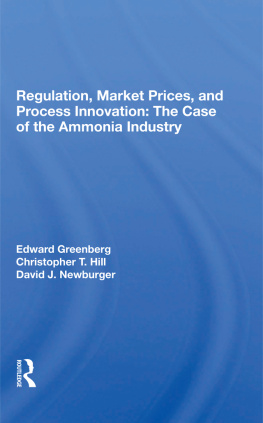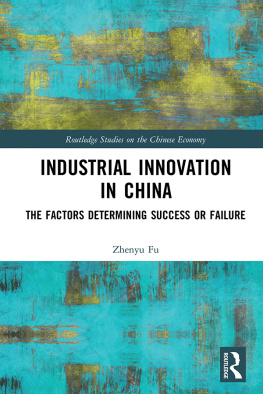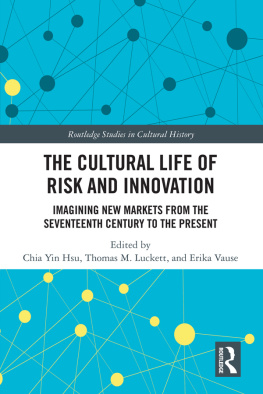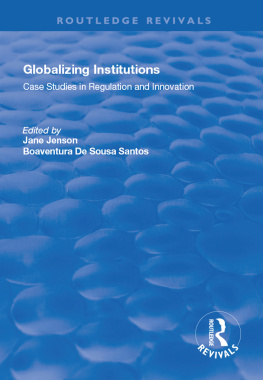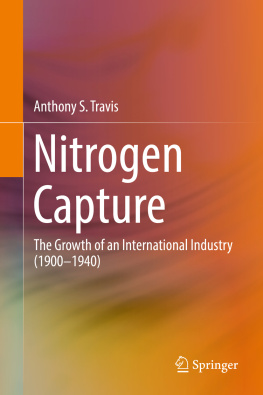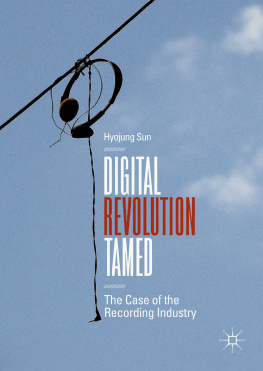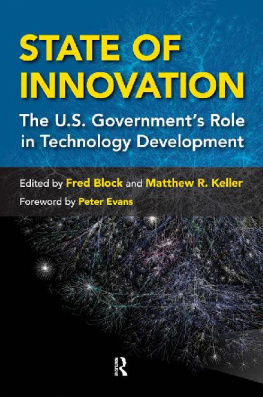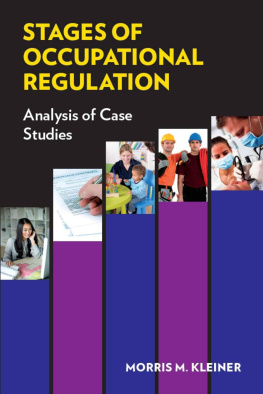Regulation, Market Prices, and Process Innovation: The Case of the Ammonia Industry
Westview Replica Editions
This book is a Westview Replica Edition. The concept of Replica Editions is a response to the crisis in academic and informational publishing. Library budgets for books have been severely curtailed; economic pressures on the university presses and the few private publishing companies primarily interested in scholarly manuscripts have severely limited the capacity of the industry to properly serve the academic and research communities. Many manuscripts dealing with important subjects, often representing the highest level of scholarship, are today not economically viable publishing projects. Or, if they are accepted for publication, they are often subject to lead times ranging from one to three years. Scholars are understandably frustrated when they realize that their first-class research cannot be published within a reasonable time frame, if at all.
Westview Replica Editions are our practical solution to the problem. The concept is simple. We accept a manuscript in camera-ready form and move it immediately into the production process. The responsibility for textual and copy editing lies with the author or sponsoring organization. If necessary we will advise the author on proper preparation of footnotes and bibliography. We prefer that the manuscript be typed according to our specifications, though it may be acceptable as typed for a dissertation or prepared in some other clearly organized and readable way. The end result is a book produced by lithography and bound in hard covers. Initial edition sizes range from 400 to 600 copies, and a number of recent Replicas are already in second printings. We include among Westview Replica Editions only works of outstanding scholarly quality or of great informational value, and we will continue to exercise our usual editorial standards and quality control.
Regulation, Market Prices, and Process Innovation: The Case of the Ammonia Industry
Edward Greenberg, Christopher T. Hill, and David J. Newburger
Through the study of innovation in processes for the production of synthetic ammonia, the authors examine the effects of environmental and workplace regulations on business innovation in general. They present a history of ammonia production in the U.S., a survey of government regulation in the industry, and a model of process innovation that combines the economist's production function with the technical and practical concepts of the engineer.
Contrary to the widely held view that regulation has an unfortunate impact on business, the authors demonstrate thatat least in one industrythe economic factors of production have a measurable impact on innovation, while regulation does not.
Edward Greenberg is professor of economics at Washington University. Christopher T. Hill is senior research associate at the Center for Policy Alternatives, Massachusetts Institute of Technology. David J. Newburger is assistant professor of law at the Washington University School of Law.
Regulation, Market Prices, and Process Innovation: The Case of the Ammonia Industry
Edward Greenberg, Christopher T. Hill, and David J. Newburger
with the assistance of Thomas M. Helscher, William V. Killoran, and Alan D. Norman
First published 1979 by Westview Press
Published 2019 by Routledge
52 Vanderbilt Avenue, New York, NY 10017
2 Park Square, Milton Park, Abingdon, Oxon OX14 4RN
Routledge is an imprint of the Taylor & Francis Group, an informa business
Copyright 1979 by Edward Greenberg, Christopher T. Hill, and David J. Newburger
All rights reserved. No part of this book may be reprinted or reproduced or utilised in any form or by any electronic, mechanical, or other means, now known or hereafter invented, including photocopying and recording, or in any information storage or retrieval system, without permission in writing from the publishers.
Notice:
Product or corporate names may be trademarks or registered trademarks, and are used only for identification and explanation without intent to infringe.
Library of Congress Catalog Card Number: 78-20661
ISBN 13: 978-0-367-28553-1(hbk)
To Joan, Sheila, and Toby
Determining the extent to which environmental and workplace regulations have affected innovation motivated the research for this book. Our previous review of the literature indicated that although many people held strong opinions on the subject, few had conducted empirical studies of the relationship between innovation and regulation. To approach the question, we believe that a suitable framework is necessary one that permits factors other than regulation to play their proper role, that portrays in a realistic fashion the legal and institutional environment within which decisions to innovate are made, and that reflects an engineering view of production processes and innovation. Accordingly, we worked as an interdisciplinary group, combining legal, engineering, and economic analysis.
The research is in the form of a case study of historical change in technologies used for the production of synthetic anhydrous ammonia. We placed particular emphasis on determining the ammonia industry's technological responses to input prices and to government regulation of the workplace and of environmental quality. We reviewed technical and legal literature on ammonia technology and regulation through December 1976. A tradition of publishing technical and economic details of processes allowed us to create time series of such inputs as fuel, feedstock, labor, and capital investment, as well as a history of U.S. ammonia production facilities, processes used, and capacities. A review of federal and state statutory and case law provided a history of the industry's regulation.
we developed a conceptual model of process innovation that combined the economist's production function with the engineer's concept of limited knowledge of technical options and constraints on plant capacity at any point in time. This led us to identify four kinds of ammonia process innovations: 1) those that reduce the required amounts of one or more inputs; 2) those that increase possibilities for substitution among inputs; 3) those that remove capacity constraints; and 4) those that introduce totally new approaches in an engineering sense.
Our major empirical findings were based on data for steam reforming of natural gas, a process widely used since World War II. We found that input factor coefficients respond to input prices with a 6-year lag, based on data for the period from 1947 to 1972. Regulation of workplace safety and health, although significant, could not be associated with process change. Regulation of environmental quality, primarily water pollution, has led only to minor process changes largely end-of-pipe pollution control.
Our study was conducted at the Center tor Development Technology, Washington University (St. Louis). The project study team consisted of E. Greenberg, Professor of Economics; C. T. Hill, Associate Professor of Technology and Human Affairs and of Chemical Engineering; D. J. Newburger, Assistant Professor of Law; and T. M. Helscher, W. V. Killoran, and A. D. Norman, graduate students in Technology and Human Affairs, Law, and Economics, respectively.


